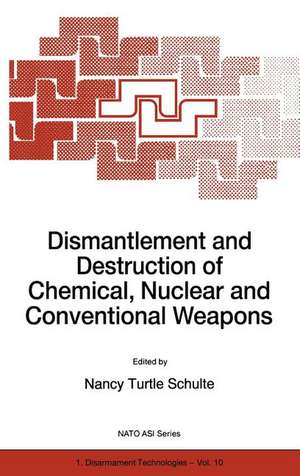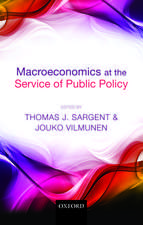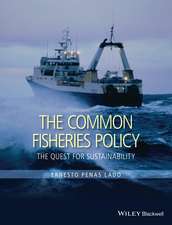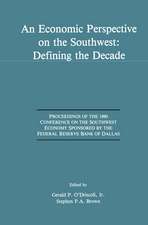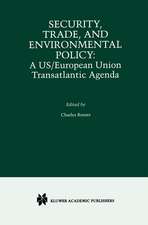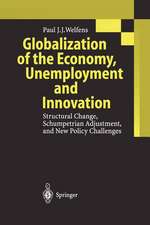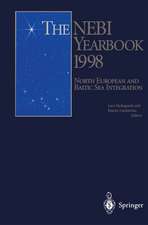Dismantlement and Destruction of Chemical, Nuclear and Conventional Weapons: NATO Science Partnership Subseries: 1, cartea 10
Editat de N. Schulteen Limba Engleză Hardback – 28 feb 1997
| Toate formatele și edițiile | Preț | Express |
|---|---|---|
| Paperback (1) | 942.94 lei 6-8 săpt. | |
| SPRINGER NETHERLANDS – 6 dec 2010 | 942.94 lei 6-8 săpt. | |
| Hardback (1) | 949.23 lei 6-8 săpt. | |
| SPRINGER NETHERLANDS – 28 feb 1997 | 949.23 lei 6-8 săpt. |
Din seria NATO Science Partnership Subseries: 1
- 15%
 Preț: 643.65 lei
Preț: 643.65 lei - 18%
 Preț: 951.14 lei
Preț: 951.14 lei - 18%
 Preț: 950.96 lei
Preț: 950.96 lei - 18%
 Preț: 1226.42 lei
Preț: 1226.42 lei -
 Preț: 392.97 lei
Preț: 392.97 lei - 18%
 Preț: 944.36 lei
Preț: 944.36 lei - 18%
 Preț: 1227.04 lei
Preț: 1227.04 lei - 18%
 Preț: 1220.26 lei
Preț: 1220.26 lei - 18%
 Preț: 947.35 lei
Preț: 947.35 lei - 18%
 Preț: 952.09 lei
Preț: 952.09 lei - 18%
 Preț: 955.56 lei
Preț: 955.56 lei - 15%
 Preț: 643.65 lei
Preț: 643.65 lei - 18%
 Preț: 947.67 lei
Preț: 947.67 lei - 18%
 Preț: 1111.97 lei
Preț: 1111.97 lei - 18%
 Preț: 1230.66 lei
Preț: 1230.66 lei - 5%
 Preț: 2125.27 lei
Preț: 2125.27 lei - 15%
 Preț: 650.86 lei
Preț: 650.86 lei - 18%
 Preț: 949.23 lei
Preț: 949.23 lei - 15%
 Preț: 640.37 lei
Preț: 640.37 lei - 15%
 Preț: 650.37 lei
Preț: 650.37 lei - 18%
 Preț: 1225.16 lei
Preț: 1225.16 lei -
 Preț: 391.40 lei
Preț: 391.40 lei - 18%
 Preț: 945.14 lei
Preț: 945.14 lei - 5%
 Preț: 1407.87 lei
Preț: 1407.87 lei -
 Preț: 398.15 lei
Preț: 398.15 lei -
 Preț: 390.46 lei
Preț: 390.46 lei
Preț: 949.23 lei
Preț vechi: 1157.60 lei
-18% Nou
Puncte Express: 1424
Preț estimativ în valută:
181.63€ • 189.27$ • 150.39£
181.63€ • 189.27$ • 150.39£
Carte tipărită la comandă
Livrare economică 03-17 aprilie
Preluare comenzi: 021 569.72.76
Specificații
ISBN-13: 9780792344704
ISBN-10: 0792344707
Pagini: 246
Ilustrații: XVI, 246 p.
Dimensiuni: 155 x 235 x 16 mm
Greutate: 0.55 kg
Ediția:1997
Editura: SPRINGER NETHERLANDS
Colecția Springer
Seria NATO Science Partnership Subseries: 1
Locul publicării:Dordrecht, Netherlands
ISBN-10: 0792344707
Pagini: 246
Ilustrații: XVI, 246 p.
Dimensiuni: 155 x 235 x 16 mm
Greutate: 0.55 kg
Ediția:1997
Editura: SPRINGER NETHERLANDS
Colecția Springer
Seria NATO Science Partnership Subseries: 1
Locul publicării:Dordrecht, Netherlands
Public țintă
ResearchCuprins
1. Cooperation as a Common Strategic Interest.- Session 1: Dismantlement and Destruction of Chemical, Nuclear and Conventional Weapons.- 2. Toward Peace with Ever-Fewer Weapons.- 3. Dismantlement and Destruction of Chemical, Nuclear and Conventional Weapons.- 4. Disarmament and Conversion.- Session 2: Status of Implementation of Arms Control Treaties and Voluntary Commitments.- 5. Challenges in Reducing the Legacy of the Cold War.- 6. French Policy on Arms Control and Disarmament.- Session 3: National Perspectives on Cooperation in Disarmament.- 7. The Netherlands: Participation in Chemical Weapons Destruction.- 8. Norwegian Perspectives and Participation in Nuclear and Chemical Weapons Disarmament.- 9. U.S. National Perspectives on Cooperation in Disarmament: The Cooperative Threat Reduction Program.- 10. Belarus: Problems of Disarmament and Arms Control.- 11. The French-Russian Programme for Nuclear Weapons Dismantlement: The “AIDA Plan”.- 12. German Perspectives on Cooperation in Disarmament.- 13. Japanese Perspectives on the Destruction of Nuclear and Chemical Weapons.- 14. Implementation of Arms Control Treaties: A U.K. Perspective.- Session 4: Stocktaking of National and Bilateral Disposal/Destruction Programmes: Chemical Weapons.- 15. The Destruction of Chemical Weapons under the Chemical Weapons Convention.- 16. Overview of the United States Chemical Demilitarization Program.- 17. Destruction of German Old Chemical Weapons in Munster.- 18. United States Support to the Russian Chemical Weapons Destruction Program.- 19. German-Russian Cooperation in the Destruction of Chemical Weapons.- 20. Swedish-Russian Cooperation Project Concerning the Lewisite Storage Facility in Kambarka.- Session 5: Stocktaking of National and Bilateral Disposal/Destruction Programmes:Nuclear Weapons.- 21. Status of Dismantlement of Nuclear Weapons: U.S. Department of Energy.- 22. Cooperative Threat Reduction: The View from Russia.- 23. Nuclear Disarmament: A French Perspective.- 24. German Bilateral Cooperative Programmes in the Nuclear Field.- 25. Cooperative Approaches to Disarmament and Non-Proliferation.- 26. Japan’s Technical Secretariat on Cooperation for the Elimination of Nuclear Weapons.- 27. Combatting Illicit Trafficking of Nuclear Materials: Cooperation Projects Financed by the European Union with Non-Member Countries.- Session 6: Stocktaking of National and Bilateral Disposal/Destruction Programmes: Conventional Weapons.- 28. Plans, Programmes and Challenges in the Destruction of Conventional Weapons.- 29. The CFE Treaty as the Foundation for European Security: Russia’s Participation and Perspectives.- 30. Dismantlement and Destruction of Conventional Weapons.- Session 7: Experience with Currently Employed Chemical Destruction Technologies.- 31. Currently Employed Destruction Technologies: An Introduction.- 32. Chemical Warfare Agents and Weapons Disposal Experience in the United States.- Session 8: Alternative Chemical Destruction Technologies.- 33. International Union of Pure and Applied Chemistry (IUPAC) Working Party on Chemical Weapons Destruction Technologies.- 34. Destruction of Chemical Weapons.- 35. Old Chemical Weapons in Belgium: Do We Need Alternative Destruction Technologies?.- Session 9: Deactivation, Dismantlement and Destruction of Delivery Systems and Infrastructure for Nuclear Weapons.- 36. Deactivation, Dismantlement and Destruction of Delivery Systems and Infrastructure.- 37. Dismantlement of Strategic Nuclear Delivery Vehicles and their Associated Infrastructure: Prospects and Problems.- Session 10: Storage,Safeguarding and Disposition of Fissile Materials.- 38. Storage and Safeguarding of Fissile Materials.- 39. Disposition of Weapons-Grade Plutonium in Russia: Evaluation of Different Options.- 40. Storage, Safeguarding and Disposition of Fissile Materials.- Session 11: Technologies for Conversion and Civil Use of Demilitarized Materials.- 41. Plans, Programmes and Challenges in the Destruction of Conventional Weapons.- 42. Conversion Technologies and the Civilian Use of Demilitarised Material.- Session 12: International Organizations.- 43. The NATO Science Committee Disarmament Technologies Programme.- 44. Redirection of Research Facilities and Scientific Personnel.- 45. The Science and Technology Centre of Ukraine.- Session 13: Environmental Challenges Posed by Chemical and Nuclear Disarmament.- 46. Cooperation in Solving Environmental Problems of the Armed Forces of Russia and Germany: Experience and Prospects.- 47. Aspects of Environmental Protection in the Destruction of Chemical Weapons.- 48. Environmental Policy Challenges in Connection with Disarmament and Contaminated Military Sites.- 49. Environmental Challenges Posed by Nuclear Disarmament in the North: The Finnish Response.- 50. Disarmament and Environment.- Conclusion.- 51. Accomplishments and Challenges of Disarmament.- Appendix: List of Participants.
